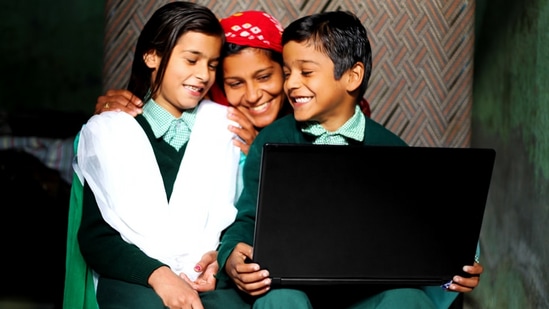Girls deserve equal access to tech and STEM education
The study has been authored by Shilpa Singhal, Founder, Sitare Foundation
The ed-tech sector, rightly so, has been celebrated for quickly and efficiently making education accessible through technology in a highly disruptive education environment caused by the pandemic. Ed-tech also has the promise of helping traditionally underserved girls and women of India pursue Science, Technology, Engineering and Mathematics (STEM) education, leading to far better career options for them. However, a lot of work remains to be done to encourage girls to pursue STEM fields.

The Narendra Modi-government recently launched two flagship schemes—Vigyan Jyoti and Engage with Science (Vigyan Prasar)—which are commendable for adopting a holistic approach to promote STEM-education among girl students that will help immensely in achieving India’s gender equity goals.
Learning 21st-century skills and a STEM mindset—characterised by digital fluency, critical thinking, and the ability to problem-solve through innovation—could increase women’s chances of occupational and income mobility. We need to understand the hurdles and the facilitators for women and girls in accessing STEM education, something that the government has rightly sought to address through its various schemes.
According to a UNESCO study, as of 2020, women form less than a third of the global average of the STEM workers (28.8%). According to the annual All India Survey on Higher Education (AISHE) report, which compiles enrolment in undergraduate, Masters, and PhD-level programmes, between 2017-18 and 2019-20, there is a growth of almost 54,000 in the number of women in STEM whereas there is a decline of about 59,000 in the number of men enrolled in STEM studies.
This data is also observed in the proportion of female students compared to every 100 male students, particularly in medicine-related science fields. For the BSc course, the ratio of female students per 100 male students went up from 94 (or 48%) in 2016-17 to 113 (or 53%) in 2019-20; and for MBBS, it went up from 99 to 113. During the same period, enrolment in bachelor’s in technology courses went up from 39 (about 28%) to 42 (about 30%). The ratio of women who enrolled for BSc (Nursing) per 100 male students was 445 (2015-16), 384 (2016-17), 379 (2017-18), 358 (18-19), and 385 (2019-20). It is clear that though women are choosing STEM courses, they are not pursuing careers in technology and engineering at the same rate as other STEM fields.
In a written reply to the Lok Sabha last year, Union education minister Dharmendra Pradhan, citing the World Bank data, noted that in terms of percentages, there are more Indian female graduates (43%) in STEM at the tertiary level than in developed nations like the United States (34%), United Kingdom (38%), Germany (27%) and France (32%).
These are encouraging trends but they could be masking an underlying pattern in India’s digital divide that may be putting girls to a disadvantage. According to a Harvard Kennedy School study (2018), in India, 71% of men own mobile phones as compared to 38% of women. It is particularly relevant because mobile phones, besides having many other utilities, are also the gateway to a whole new world of opportunities. Only 33% of urban, and 28% of rural women have access to the internet.
The government’s official statistics also mirror this. According to the Key Indicators of Household Social Consumption on Education in India report, based on the 2017-18 NSSO, fewer than 15% rural households have access to the Internet, compared to 42% among their urban counterparts. The picture gets even worse among women. Only 8.5% of women surveyed (aged above five) in rural areas have access to the Internet. A study by Young Lives, an international study of childhood poverty following the lives of 12,000 children in Ethiopia, India, Peru, and Vietnam over 15 years, mirrors the same disturbing gender discrimination to digital access in India.
According to the study boys in India are much more likely to use a computer, the internet and other forms of technology, such as a smartphone regularly than their female counterparts. The reason behind this is two-fold. The first is the digital divide, which points at the relatively low number of women with access to the internet and all its potential. The second, and larger factor, despite great advances in education for girls, their overall dropout rates and a social push towards formulaic jobs moves them away from STEM.
The education systems and hiring processes should be reimagined around a STEM framework, and the curricula adapted to include critical thinking, a scientific temperament, problem solving and aptitude towards creativity and innovation. Gender blind interviews and application processes yield more qualified women in the workforce, not just in STEM. Helping women succeed in STEM jobs is equally important. Articulating STEM as a mindset, rather than just subjects which need to be taught, is crucial in preparing girls to become change-makers and claim their stake in the future.
(The study has been authored by Shilpa Singhal, Founder, Sitare Foundation)
All Access.
One Subscription.
Get 360° coverage—from daily headlines
to 100 year archives.



HT App & Website







